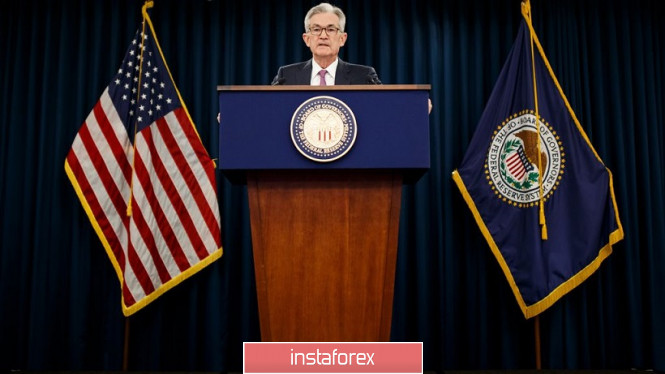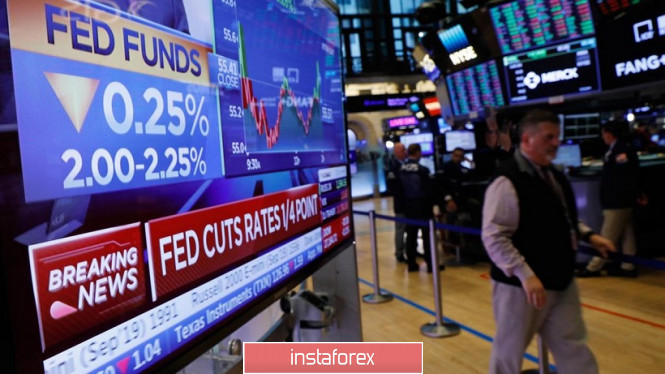The dollar index reached a two-year high yesterday, responding to the outcome of the July Fed meeting. Despite the fact that the Federal Reserve tried to maintain a balance between dovish intentions and hawkish rhetoric, the market made very definite conclusions and these were in favor of the American currency. Together with the euro, the dollar confidently entered the 10th figure, outlining for itself new price horizons. If the momentum of the downward movement continues, the pair bears will soon be able to test the following: the strongest support levels - 1.0950 (lower Kumo cloud boundary on the monthly chart) and 1.0850 (lower Bollinger Bands line on the same timeframe).

By and large, the dollar yesterday received a carte blanche for further strengthening. Almost all the factors (with the exception of one, which we will discuss a little lower), restraining the growth of the greenback, are currently leveled. In late spring and early summer, the American currency was under pressure from negative macroeconomic reports. Nonfarm suddenly sank to multi-month lows, inflation slowed down its growth, the volume of business investment declined, and indicators of industrial production were in the "red zone", not significantly falling short of forecast values. All these releases were published in the period of the next escalation of the trade war between the US and China, aggravating the fundamental picture. It was during this time period that the Fed came to the conclusion that it was necessary to ease monetary policy. Regulator members began to prepare the markets for such a step while Jerome Powell, speaking in Congress in early July, actually announced a rate cut at the next meeting. In other words, yesterday's Fed decision was widely anticipated and predictable event that was played by the market more than a month ago. Traders feared the implementation of a milder scenario - a reduction in the rate by 50 points or several rounds of decline by the end of the current year. And when the Fed actually eliminated such options, the dollar went up in the entire market. Traders feared the implementation of a milder scenario - a reduction in the rate by 50 points or several rounds of decline by the end of the current year.
By and large, the dollar yesterday received a carte blanche for further strengthening. Almost all the factors (with the exception of one, which we will discuss a little lower) that restrains the growth of the greenback are currently leveled. In late spring and early summer, the American currency was under pressure from negative macroeconomic reports. Nonfarm suddenly sank to multi-month lows and inflation slowed down its growth. The volume of business investment declined and indicators of industrial production were in the "red zone", but not significantly falling short of forecast values. All these releases were published in the period of the next escalation of the trade war between the US and China, aggravating the fundamental picture. It was during this time period that the Fed came to the conclusion that it was necessary to ease monetary policy. Regulator members began to prepare the markets for such a step while Jerome Powell, speaking in Congress in early July, actually announced a rate cut at the next meeting. In other words, yesterday's Fed decision was widely anticipated and a predictable event that was played by the market more than a month ago. Traders feared the implementation of a milder scenario: a reduction in the rate by 50 points or several rounds of decline by the end of the current year.
It is worth noting that the American regulator tried to keep the balance in his rhetoric, so he hinted at a possible rate cut in September or at one of the meetings until the end of the year. However, this decision of the Fed will depend on the incoming data. First of all, we are talking about the state of the labor market and inflation. Ironically, the "black line" for the dollar was complete in the period when the Fed was preparing to reduce the interest rate (for the first time since 2008). Recent data on Nonfarm have shown significant growth. According to preliminary forecasts, tomorrow key indicators of the American labor market will show a similar result. Inflation remains muted but even a weak rise in inflation indicators allows the Fed to keep on waiting. Here, it is worth noting that indicators on the volume of retail sales, consumer confidence indicator, the growth rate of average hourly wages and the volume of US GDP, have demonstrated a positive trend recently. These suggest that the probability of a September rate cut is almost zero despite the ominous warnings of the regulator.
This is due to the fact of markets' reaction to the results of the July meeting of Fed members. The demand for the dollar is growing, as the Fed is very likely to be limited to a "warning shot", without any continuation in the fall. Unlike the European Central Bank, which in September will only begin to ease monetary policy. The latest data on the growth of European inflation was controversial. The general consumer price index came out slightly better than expected (1.1%), while core inflation again disappointed. The core index rose only 0.9% (with the growth forecast to 1%). Such a result increased the likelihood of aggressive easing of monetary policy parameters (rate reduction + QE resumption). In other words, the likely correlation of the actions of the Fed and the ECB is now putting additional pressure on the EUR/USD pair.

Thus, the dollar has only one significant opponent and that is the president of the United States. After the announcement of the results of the July meeting, Donald Trump announced that "The Fed has again disappointed everyone." In his opinion, the market would like to hear from Powell about the beginning of a long and decisive cycle of rate cuts that the States would go in this context on a par with China and the European Union. Earlier, Trump has already accused China and Europe of using currency manipulations, while Washington "only obediently watches this process." After that, experts began talking about the fact that the president could initiate the use of currency intervention in the coming months. Analysts estimate the likelihood of this scenario in different ways. But almost all of the economists surveyed by Bloomberg do not exclude such a scenario.
According to American journalists, Trump can still implement this scenario, allegedly in late July. He instructed his advisers to prepare him with options for possible actions. I believe that in the wake of recent events, the likelihood of conducting currency intervention has increased. Moreover, it will increase even more if the EUR/USD pair declines to the area of the ninth figure.
The material has been provided by InstaForex Company - www.instaforex.com